Tokenized Securities Benefits Calculator
Tokenization Benefits Summary
Based on your inputs, here are the key advantages of tokenized securities:
Instant Settlement
Reduces settlement time from days to seconds
Cost Savings
Savings of on issuance costs
Liquidity Boost
Enables 24/7 trading of fractional tokens
Global Access
Retail investors can invest starting from
Detailed Breakdown
- Token Value Per Unit: $10
- Traditional Settlement Cost: $3,500,000
- Tokenized Settlement Cost: $350,000
- Potential Market Value Unlock: $4 Trillion
Imagine buying a slice of a downtown office building for the price of a coffee. That scenario isn’t sci‑fi any more - it’s possible thanks to Tokenized Securities digital tokens that represent ownership rights in real‑world assets, backed by blockchain technology. By turning traditional equities, bonds, real‑estate or private‑equity stakes into tradeable tokens, the market gains speed, openness and a whole new level of flexibility. Below we walk through the concrete advantages that this technology delivers to issuers, investors and regulators alike.
Quick Takeaways
- Settlement can shrink from days to minutes, slashing operational costs by up to 90% for bond issuance.
- Fractional ownership unlocks liquidity for assets that were previously "locked" for decades.
- Retail investors gain access to private‑equity‑grade deals with entry points as low as a few hundred dollars.
- Smart contracts automate compliance, dividend payments and corporate actions, reducing human error.
- Transparent, immutable ledgers improve security, auditability and regulator confidence.
Efficiency Gains and Cost Reduction
Traditional securities rely on a chain of custodians, clearing houses and settlement agents. Each handoff adds time and fees. When a security is tokenized, the entire lifecycle - issuance, trading, settlement - lives on a blockchain a distributed ledger that records transactions in an immutable, time‑stamped sequence. Smart contracts (self‑executing code) replace manual reconciliations and can automatically verify ownership, calculate settlement amounts, and trigger transfers.
Industry data shows bond‑issuance costs can drop by as much as 90% when smart contracts handle the paperwork. Fundraising expenses for private placements shrink by roughly 40% because the need for costly legal intermediaries diminishes. The $181billion the financial sector spends annually on compliance can be trimmed dramatically - code‑based rule checks cost pennies per transaction compared with thousands of dollars in staff time.
Liquidity Boost Through Fractional Ownership
Liquidity has always been the Achilles’ heel of assets like private equity, commercial real‑estate or fine art. Tokenization slices these large, indivisible holdings into fractional ownership smaller, tradable units that represent a proportionate share of the underlying asset. A single office tower worth $50million could be issued as 5million tokens at $10 each, instantly creating a secondary market.
Investors worldwide can buy, sell or hold these tokens 24/7, bypassing the T+2 or T+3 clearing cycles of legacy markets. The result is a dramatic increase in tradable volume and a reduction in the “lock‑up” period that traditionally kept capital on the sidelines. Estimates suggest roughly $4trillion of private‑equity value could become fluid if tokenized today.
Democratizing Access for Retail and Emerging‑Market Participants
High entry thresholds have kept most retail investors out of high‑yield asset classes. Tokenized securities level the playing field by allowing investments as low as $500, compared with the $100000+ minimums typical of private funds. All that’s needed is a smartphone and an internet connection.
In emerging economies where capital markets are thin, the technology acts as a bridge. A farmer in Nairobi can now hold a token representing a share of a solar farm in Spain, earning dividends without ever leaving his village. This global reach also fuels competition among issuers, driving better pricing and more innovative product designs.
Transparency, Security and Trust
Because every transaction is recorded on a blockchain, the ownership ledger is both transparent and tamper‑proof. Auditors and regulators can pull an immutable trail of who owned what, when, and at what price. This reduces disputes over capital‑structure changes and simplifies the verification of voting rights.
Smart contracts add another layer of security. They embed compliance logic directly into the token, ensuring that only eligible investors can trade, that anti‑money‑laundering checks are performed automatically, and that dividend payouts happen on schedule. The result is a system that is harder to hack, easier to inspect, and less prone to human error.
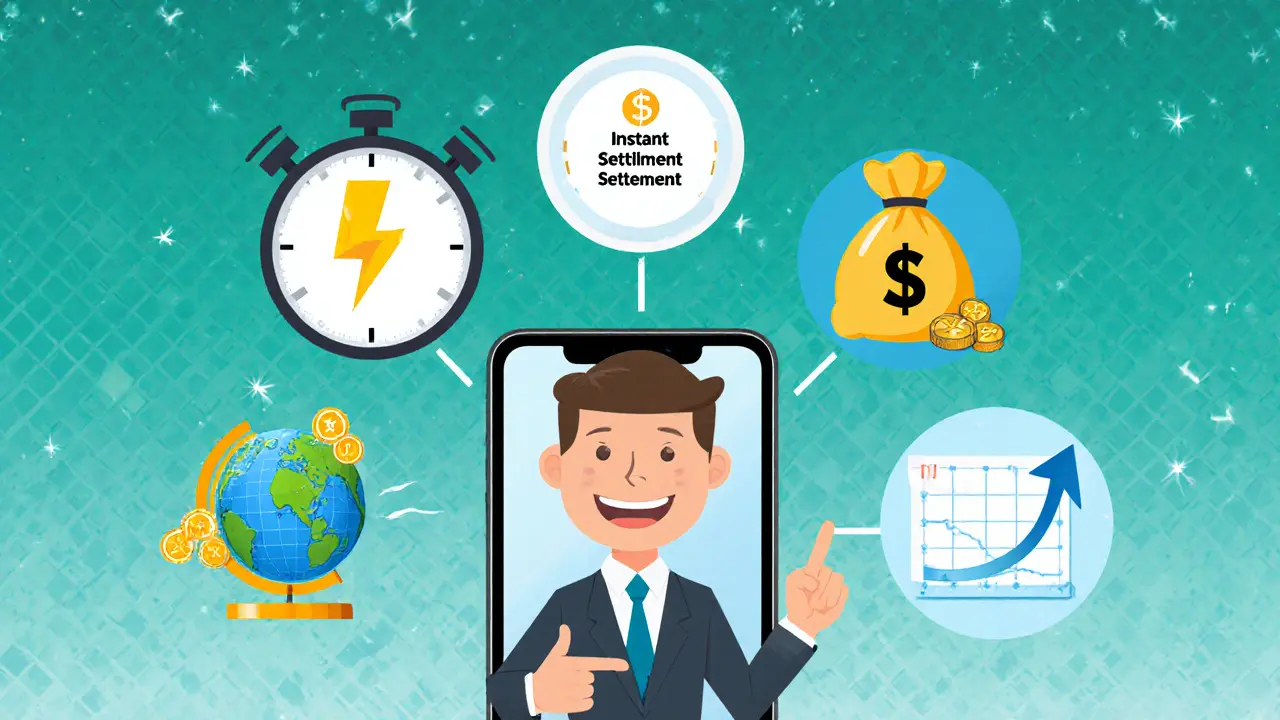
Programmability and Composability
Beyond simple ownership, tokenized securities can be programmed to perform complex functions. Imagine a token that automatically splits dividend payouts based on a pre‑defined revenue share, or a token that triggers a corporate vote the moment a quorum is reached. These programmable features enable new product families - dynamic ETFs that rebalance in real time, revenue‑sharing tokens for royalty streams, or bundled securities that bundle real‑estate exposure with green‑energy credits.
Because each token follows a standard interface, developers can compose them together like Lego bricks. A portfolio manager could bundle a tokenized bond, a tokenized equity, and a tokenized real‑estate asset into a single, tradable package, creating bespoke investment solutions that were impossible in the old siloed market.
Custody Flexibility and Investor Choice
Investors are no longer forced into a one‑size‑fits‑all custodial model. With tokenized securities, one can opt for self‑custody - storing private keys in a hardware wallet - or rely on a regulated custodian that offers insurance and recovery services. The choice aligns with personal risk tolerance and technical comfort, giving investors a sense of ownership that matches their lifestyle.
Market Adoption and Regulatory Landscape
Regulators across the globe are beginning to draft frameworks that specifically address digital asset securities. The goal is to preserve investor protection while encouraging innovation. In the UnitedStates, the SEC has issued no‑action letters for compliant token offerings; the European Union is working on the MiCA regulation, and Singapore’s MAS has already granted licences to several tokenisation platforms.
Major banks and asset managers are piloting tokenisation projects. For example, a leading European bank announced a pilot that will issue $1billion of corporate bonds as tokens on a permissioned blockchain. Such moves signal mainstream acceptance and reassure investors that the technology is moving beyond the experimental stage.
Comparison: Traditional Securities vs. Tokenized Securities
| Aspect | Traditional Securities | Tokenized Securities |
|---|---|---|
| Settlement time | Days (T+2/T+3) | Minutes to seconds (on‑chain) |
| Issuance cost | 5‑10% of capital raised | 0.5‑2% (automation) |
| Liquidity | Low for private assets | High - fractional tokens trade 24/7 |
| Investor access | High minimums, limited geography | Low minimums, global market |
| Transparency | Opaque, manual reporting | Immutable ledger, real‑time audit |
Next Steps for Investors and Issuers
- Assess platforms: Look for providers that operate on regulated, permissioned blockchains and offer custodial options.
- Check compliance: Ensure the token complies with the securities laws of your jurisdiction - many platforms embed KYC/AML checks directly in the token.
- Start small: Pilot with a modest allocation (e.g., $1,000‑$5,000) to get comfortable with wallet management and settlement flows.
- Monitor regulatory updates: Keep an eye on evolving frameworks like the EU’s MiCA, the U.S. SEC guidance, and local fintech sandboxes.
Frequently Asked Questions
What exactly is a tokenized security?
A tokenized security is a digital representation of a real‑world asset-such as a stock, bond, or piece of real estate-created on a blockchain. The token carries the same legal rights as the underlying asset but can be transferred instantly and fractionally.
How does settlement work for tokenized securities?
When a buyer and seller agree on a trade, a smart contract validates the transaction, updates the ownership ledger, and moves the tokens from one wallet to another-all within a few minutes and without needing a central clearing house.
Can I hold tokenized securities in a regular brokerage account?
Most traditional brokerages do not yet support blockchain assets. Investors usually keep tokens in a compatible crypto wallet or use a custodian that specializes in digital securities.
Are tokenized securities regulated?
Yes. In most jurisdictions the token is treated as a security, so issuers must comply with existing securities laws. Many platforms embed KYC/AML checks directly into the token’s smart contract to stay compliant.
What risks should I be aware of?
Key risks include technical failures of the blockchain, regulatory changes, and the need for secure private‑key management. Diversifying across platforms and using reputable custodians can mitigate many of these concerns.






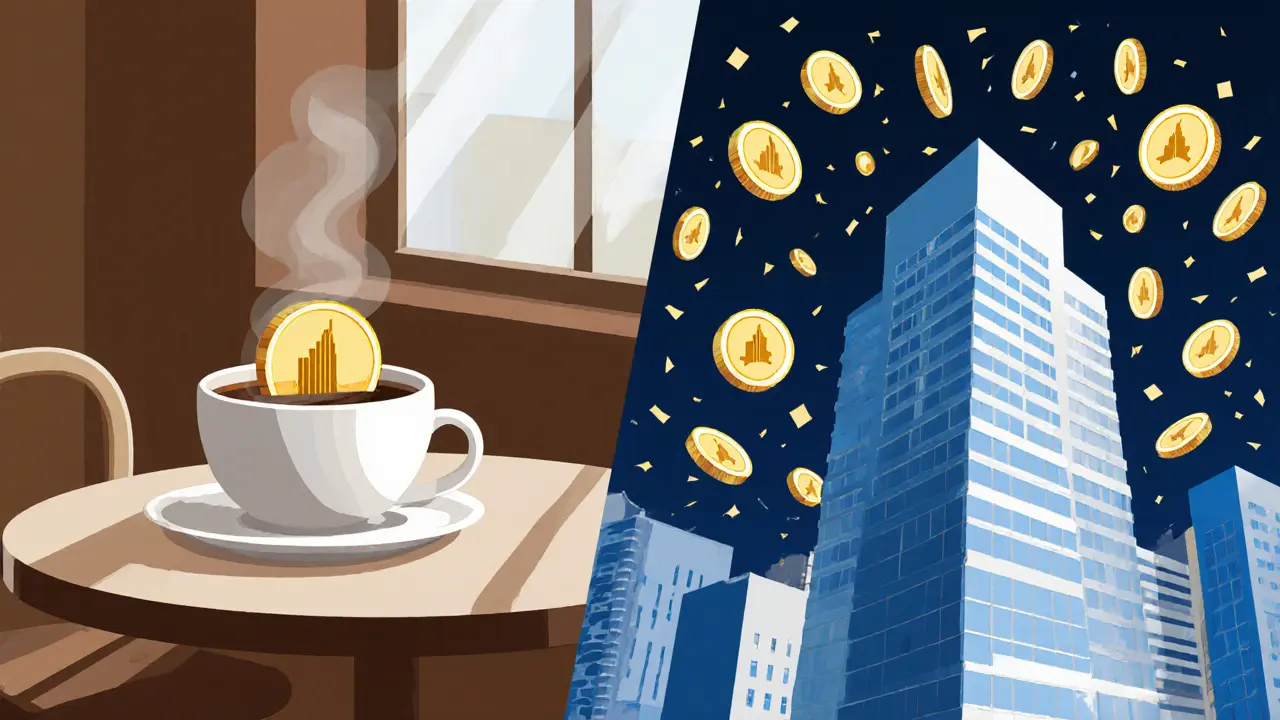

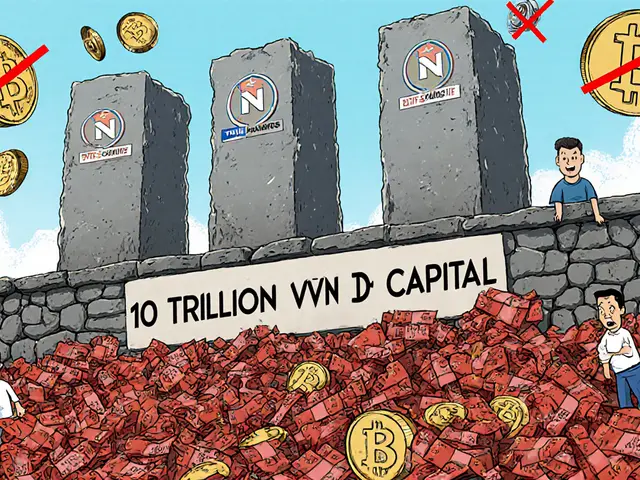
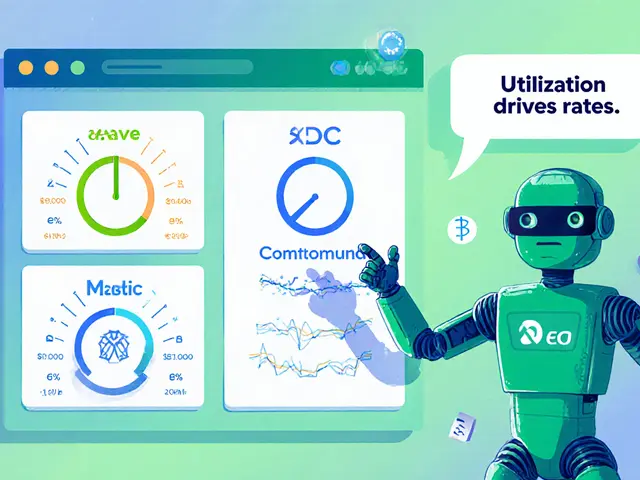

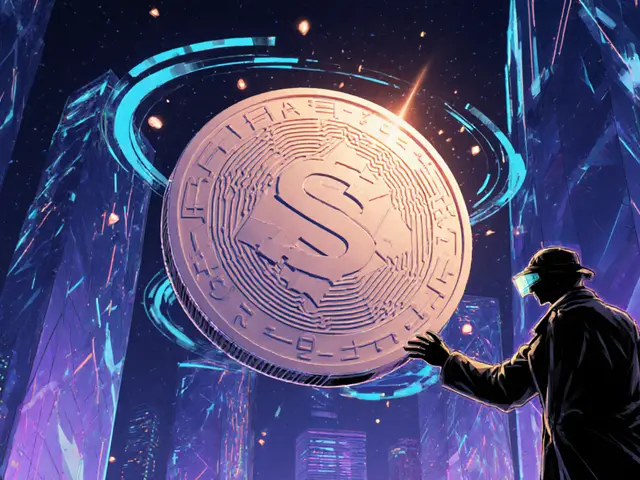
People Comments
While the purported advantages of tokenized securities are widely publicized, the implicit regulatory uncertainties render the enthusiasm premature.
One might contemplate that the allure of instant settlement obscures the deeper epistemological shift from centralized custodianship to distributed consensus, a transition that is as much philosophical as it is technical.
The so‑called “cost savings” are a veneer; in practice the hidden fees, blockchain gas expenditures, and liquidity fragmentation merely replace traditional issuance costs with opaque, volatile expenses, making the entire construct dubious.
Nonetheless, the potential for broader market participation is encouraging; if the infrastructure matures, even modest investors could access asset classes previously out of reach, which is a positive development.
Indeed, the tokenization model, while ostensibly revolutionary, suffers from a plethora of operational inefficiencies, excessive gas fees, limited interoperability, and an overall paucity of regulatory clarity, which collectively diminish its purported benefits; moreover, the speculative nature of many token offerings further exacerbates investor risk.
Nevertheless, it is worth acknowledging that the blockchain ecosystem is evolving rapidly, and incremental improvements in protocol design, layer‑2 scaling solutions, and standardized compliance frameworks may eventually address many of the concerns raised above.
Sure, if you enjoy paying extra for the novelty of a digital receipt, go ahead.
Oh, the melodrama of a “digital receipt” – as if the mere abstraction of ownership could conjure profitability out of thin air. The theatricality is palpable.
Great overview! 😊
Our country deserves cutting‑edge financial tools, and tokenized securities are exactly the kind of innovation that will keep us ahead of the competition.
The emergence of tokenized securities represents a paradigmatic shift in the asset tokenization continuum, leveraging distributed ledger technology to fractionalize ownership interests and thereby democratize capital markets.
From a liquidity perspective, the granularity afforded by ERC‑20 compliant tokens facilitates continuous trading cycles, attenuating the traditional illiquidity premium associated with bespoke financial instruments.
Regulatory arbitrage, while contentious, enables issuers to domicile offerings within permissive jurisdictions, thus optimizing compliance cost structures via a modular legal framework.
Smart contract automation introduces deterministic settlement protocols, eliminating counterpart risk and obviating the need for custodial intermediaries, which historically inflate operational overhead.
However, the confluence of cross‑chain interoperability challenges and divergent KYC/AML standards engenders a fragmented compliance landscape that necessitates sophisticated orchestration layers.
Scalability solutions, such as rollups and state channels, aim to mitigate network congestion, thereby reducing gas fee volatility and enhancing transaction finality.
Token economics, when meticulously calibrated, can align stakeholder incentives through vesting schedules, token burn mechanisms, and governance tokenomics, fostering sustainable ecosystem growth.
On the macroeconomic front, the expansion of tokenized securities contributes to capital market deepening, potentially unlocking trillions of dollars in dormant liquidity.
Nonetheless, market participants must remain vigilant regarding smart contract security vulnerabilities, as code exploits can precipitate systemic risk within the tokenized asset stack.
The integration of decentralized finance (DeFi) primitives, such as automated market makers and liquidity mining, further diversifies yield generation avenues for token holders.
From an investor protection standpoint, transparent on‑chain auditing trails provide immutable provenance, enhancing due diligence processes relative to opaque legacy securities.
Yet, the nascent nature of secondary market infrastructure imposes constraints on order book depth, potentially exacerbating slippage for high‑volume trades.
Custodial solutions, ranging from non‑custodial hardware wallets to institutional‑grade vaults, must evolve to accommodate the nuanced risk profiles of tokenized asset custodianship.
In sum, while tokenized securities herald a transformative epoch for financial intermediation, their ultimate efficacy will be contingent upon regulatory harmonization, technological robustness, and market participant sophistication.
Future research should therefore focus on empirical assessments of liquidity lift, cost reduction quantification, and the systemic implications of widespread token adoption.
Thus, stakeholders are urged to engage in multidisciplinary collaboration to actualize the full spectrum of benefits inherent to tokenized securities.
Indeed, the intricate tapestry of decentralization you described invites us to reconceptualize not only ownership but also the very semantics of value creation 🌐.
When evaluating tokenized securities, always conduct a thorough on‑chain audit and consider the smart contract audit report; otherwise you risk exposing your portfolio to hidden vulnerabilities. :-)
Our investors should prioritize domestic platforms that uphold stringent security standards, ensuring that foreign interference does not compromise national financial sovereignty.
Has anyone experimented with integrating layer‑2 scaling solutions into their tokenized security offerings? I'm curious about the real‑world impact on transaction costs and latency.
I've tried a few, and honestly the gas fees dropped dramatically while the user experience stayed smooth.
Tokenization is like painting the financial canvas with vibrant hues of accessibility, innovation, and inclusivity, turning once‑invisible opportunities into bright, reachable spots for every investor.
Sure, but don’t expect the market to magically fix itself just because you slap a shiny blockchain on it.
Honestly, the hype around tokenized securities is overblown; traditional assets still hold the most reliable returns.
While it is accurate to note that established instruments have demonstrated consistent performance, the emergent tokenization paradigm introduces novel efficiencies in settlement, fractional ownership, and global accessibility that merit rigorous academic scrutiny and pragmatic experimentation.
People keep saying tokenization is the future, but I think it's just another buzzword that will fade once the novelty wears off.
Actually, there's a lot of promising pilot projects out there; defi platforms are working hard to make it more user‑friendly and defnitely worth watching.
Agreed. If you're new to the space, start with reputable custodial services and gradually explore decentralized options as you gain confidence.